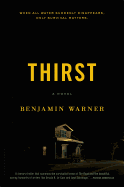
| Publisher: | Bloomsbury | |
| Genre: | General, Science Fiction, Fiction, Literary | |
| ISBN: | 9781632862150 | |
| Pub Date: | April 2016 | |
| Price: | $26 |
| Fiction |
by Benjamin Warner
What would you do if all the water that wasn't bottled suddenly disappeared? In this tense debut thriller, Benjamin Warner, creative writing instructor at Towson University in Maryland, takes this premise and spins a fast-paced story about Eddie Chapman and his wife, Laura. After being stuck in a traffic jam for hours on his way home from work, Eddie can no longer wait for the police and ambulances to arrive. Having run track in college, Eddie thinks he has the stamina to run the eight or nine miles to his house, so he abandons his car and sets off. He encounters clusters of people along the way, on the highway and then on the town's streets. They are all experiencing the same problems: no cell service, no electricity and no responses from any of the powers that be--police, ambulances, the power company or the water company. Worse yet, there's no water in anyone's taps. Even the stream bed near Eddie's home is empty. The trees and bushes along the banks have turned to powdery ash, as if a great fire had ripped through the area, instantly incinerating everything in its path.
Warner gives us a beautiful portrayal of a couple desperate for water, or anything that might quench their thirst, as they fade in and out of consciousness due to dehydration. He does a stellar job of depicting the chaos that would ensue if water suddenly disappeared, with no explanations as to how or why it vanished or when it might return. Make sure a tall glass of something cold is nearby when before enjoying Thirst. --Lee E. Cart, freelance writer and book reviewer
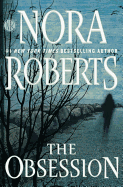
| Publisher: | Berkley | |
| Genre: | Suspense, Fiction, Romance, Contemporary Women, Contemporary | |
| ISBN: | 9780399175169 | |
| Pub Date: | April 2016 | |
| Price: | $28 |
| Fiction |
by Nora Roberts
One night changes everything in The Obsession by Nora Roberts (The Liar), a romantic suspense novel that opens with a horrifying scene. Naomi Bowes, an innocent 12-year-old from West Virginia, awakens on a stormy summer night, unable to sleep. When she sees shadows in the woods and spies her father, she secretly follows him to a grisly crime scene: a girl--bound, tortured and raped--trapped in a root cellar. After her father departs, Naomi rescues the injured girl and brings her to safety--and discovers that her overbearing father, a church deacon, is actually a demented serial killer. Naomi is instrumental in her father being sent to prison for life.
Seventeen years later, Naomi lives in Sunrise Cove, a peaceful, tight-knit community in Washington State, and has reinvented herself as Naomi Carson. She is a successful fine art photographer who thinks she's finally found a place to call home, though she is a loner who has problems trusting others and chronic nightmares. She buys and begins a major renovation on a 10-bedroom house, makes friends, adopts a dog and even falls in love. But when a series of brutal killings plague the area, Naomi's past is suddenly resurrected--as are her fears.
This spellbinding, well-constructed story plunges deep into the nature of obsession--Naomi's brother, an FBI agent desperate to understand his imprisoned father's twisted mind; and a vicious serial killer intent on striking again--and damage to the soul and psyche of a haunted woman. Roberts creates a strong, determined protagonist with whom readers can identify and empathize. --Kathleen Gerard, blogger at Reading Between the Lines

| Publisher: | Riverhead Books | |
| Genre: | General, Science Fiction, Fiction, Action & Adventure, Literary | |
| ISBN: | 9781594632419 | |
| Pub Date: | April 2016 | |
| Price: | $28 |
| Fiction |
by Manuel Gonzales
With a title like something from a B-movie, The Regional Office Is Under Attack! is a wild mashup of comics, sci-fi, fairy tales, thrillers and literary fiction. The Regional Office is a secret global organization located deep beneath the Midtown Manhattan skyscraper that houses its cover company, Morrison World Travel Concern. Directed by the administrator, Mr. Niles, and his co-founder, the mystic Oyemi, the Regional Office is a complex hierarchy of women oracles and operatives with a mission to save the world "from destruction, from self-annihilation, from the evil forces of darkness, from interdimensional war strikes, from alien forces." And so they do--until their recruiter and trainer, Henry, and top operative Emma turn against the organization and stage a dawn attack.
Manuel Gonzales's (The Miniature Wife) rambunctious storytelling reflects a youth of video games and Terry Brooks novels. But his spitfire first novel doesn't shy from the more prosaic themes of identity, love, loyalty and ambition. Its violence and bot-war shenanigans are interrupted by excerpts from a presumed scholarly study of the Regional Office's history, as if it were an organization with a trajectory of growth and decline, like some sort of posse comitatus.
The Regional Office Is Under Attack! may occasionally go a bit over the top, but Gonzales brings it down to earth. When laser bullets are flying and severed mechanical limbs are crawling along the halls, he reminds readers that above this underground New York City fantasy world are a "piss-poor Mets team and so-so Affleck movies." When push comes to shove (as it often literally does), Gonzales pulls off an amusing winner. --Bruce Jacobs, founding partner, Watermark Books & Cafe, Wichita, Kan.
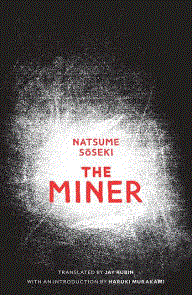
| Publisher: | Gallic Books/Aardvark Bureau | |
| Genre: | Literary Criticism, General, Asian | |
| ISBN: | 9781910709023 | |
| Pub Date: | April 2016 | |
| Price: | $15.95 |
| Fiction |
by Natsume Sōseki, trans. by Jay Rubin
Natsume Sōseki (1867-1967) played a major part in establishing the modern Japanese novel with works such as Botchan and I Am Cat, published in the early 20th century. This new edition of The Miner reintroduces English-speaking audiences to one of the great Japanese novelist's least-appreciated novels. Published serially starting in 1908, The Miner received almost universal pans from Japanese critics. For years afterward, that initial appraisal was rarely reconsidered.
The Miner is prickly and difficult. Thankfully, the fantastic introduction by celebrated novelist Haruki Murakami and the lengthy afterword by translator Jay Rubin provide context and analysis to help the reader appreciate the stylistic and intellectual daring that make The Miner an engrossing read. The protagonist is a disaffected young man of middle- to upper-class provenance who meets a procurer--a man who earns a fee convincing desperate souls to work in the mine--and follows him to "the hole." There, he makes a hellish descent into the bowels of the mine and an equally treacherous trip back to the surface. That, essentially, is the entire plot.
What Sōseki hangs upon that skeleton of a plot, however, is astonishing. Mirroring the protagonist's journey into the mine, Sōseki burrows into every thought that the character has, documenting the perambulations of each in exhausting detail. While there is not much in The Miner that might be described as entertaining in the classical, novelistic sense, the story nevertheless possesses great value for the fantastic advances it makes in describing human consciousness. A must for Sōseki fans and those fascinated by the complexities of the mind. --Hank Stephenson, bookseller, Flyleaf Books
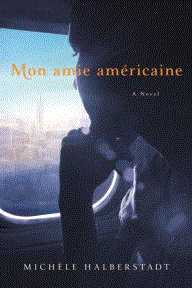
| Publisher: | Other Press | |
| Genre: | Psychological, Fiction, Contemporary Women, Literary | |
| ISBN: | 9781590517598 | |
| Pub Date: | April 2016 | |
| Price: | $14.95 |
| Fiction |
by Michèle Halberstadt, trans. by Bruce Benderson
Parisian Michèle and New Yorker Molly have been friends for many years. As colleagues in the film industry, they travel together, and talk on the phone nearly daily--until, at 40, Molly collapses in her office and becomes comatose. Michèle Halberstadt's (The Pianist in the Dark) novel Mon Amie Américaine takes the form of a long letter Michèle writes to Molly, in lieu of speaking, because "The words I can't share with you are choking me." As Molly remains unresponsive, uncomfortable truths are revealed behind a presumably lifelong friendship.
Michèle's letter acts as a diary, an account of her experience of Molly's near death: getting the news; tracking her friend's progress (or lack thereof); being forbidden to visit; and finally, after Molly awakens several months later, discovering a different person from the one she's missed. The new Molly is hesitant, frightened and languid where the old one was a high-powered businesswoman, vibrant and fun. Meanwhile, Michèle suffers injuries in her own life, with no Molly to turn to.
Bruce Benderson's translation from the French is melodic and evokes fluent but accented English, exactly as the reader expects Michèle to sound. Her tone ranges from elegiac to loving to frustrated ("How many times in the last ten years have I repeated you ought to see a specialist") to self-pitying and to resigned. This love letter to friendship ends by considering what we are willing to do for those we love, and what obstacles even friendship may be unable to overcome. --Julia Jenkins, librarian and blogger at pagesofjulia
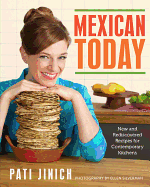
| Publisher: | Rux Martin/Houghton Mifflin Harcourt | |
| Genre: | Regional & Ethnic, General, Mexican, Cooking, Courses & Dishes | |
| ISBN: | 9780544557246 | |
| Pub Date: | April 2016 | |
| Price: | $30 |
| Food & Wine |
by Pati Jinich
Like the verb derived from the noun salsa--salsear, meaning making "something better, adding an extra layer of life, of seasoning, of joy"--Pati Jinich's passion is to share the food of her native Mexico while enhancing it with her multi-ethnic heritage. Host of the PBS series Pati's Mexican Table and official chef of the Mexican Cultural Institute in Washington, D.C., Jinich offers easy-to-follow recipes in Mexican Today, alongside tips, history and stories.
"Mexican cuisine has become borderless," she writes, noting that "Tex-Mex" has expanded to Cal-Mex, Baja Fresh, Chicago-Mex, Fusion Mex and more. Among more than 100 recipes (from soups to desserts) are Mexican Pizza and other "Mexicanized" favorites, including a burger made with chipotle-spiked pork and chorizo instead of beef, and a gravlax sandwich with salmon cured in tequila rather than the traditional Scandinavian aquavit. A "Med-Mex" salad includes olives, feta, avocados and jalapenos.
Jinich's maternal family came to Mexico from Austria after World War II; her great-aunt became a renowned pastry chef. Her paternal grandmother escaped Eastern European pogroms. Matzo ball soup with jalapenos, and grandmother's French classic Floating Island, with the twist of Mexican eggnog replacing the custard, reflect Jinich's roots. Traditionalists need not worry that Mexican "standards" are neglected: the chef includes chapters dedicated to tacos and enchiladas.
Every recipe has an English and a Spanish name, and sidebars such as "Shopping for and Using Dried Chiles" enlighten the uninitiated. --Cheryl Krocker McKeon, manager, Book Passage, San Francisco
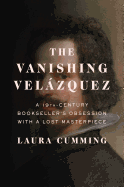
| Publisher: | Scribner | |
| Genre: | Art & Politics, Art, General, History, Biography & Autobiography, Artists, Architects, Photographers, Baroque & Rococo, Renaissance, Europe | |
| ISBN: | 9781476762159 | |
| Pub Date: | April 2016 | |
| Price: | $28 |
| History |
by Laura Cumming
British art critic and author Laura Cumming (A Face to the World) is an expert in art history and theory, but cares most about how art affects people. In The Vanishing Velázquez, she tells the story of Victorian printer, bookseller and art collector John Snare. At an auction in 1845, he lucked into a grimy portrait of Charles I that he recognized as a painting by Diego Velázquez. He researched and wrote a pamphlet to accompany his London exhibition of the portrait, which stirred up much interest and controversy: Was it genuine? If so, how could a mere bookseller have acquired it? Cumming writes that the pamphlet is "a biography of the picture, but it is also a hymn of praise. He is an evangelist for his Velázquez: ...he wants the world to see and love it as he does." The painting was taken from Snare twice, and he suffered through a dramatic legal trial to establish its ownership and provenance. He then immigrated with it to New York City, where he lived the rest of his life, exhibiting it, refusing to sell it and eventually dying alone in poverty. The portrait vanished in 1898, and it is still missing.
Cumming writes with deep feeling, critical expertise and lovely prose, alternating between the career and thinly documented life of Diego Velázquez, a brilliant and humane artist who she believes can be intimately known through his art, and the story of an equally mysterious art lover who sacrificed everything to live with one great work. --Sara Catterall
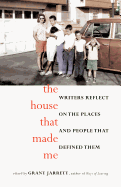
| Publisher: | Spark Press | |
| Genre: | Literary Collections, General, Language Arts & Disciplines, Biography & Autobiography, Life Stages, Essays, Family & Relationships, Rhetoric, Personal Memoirs | |
| ISBN: | 9781940716312 | |
| Pub Date: | April 2016 | |
| Price: | $17 |
| Essays & Criticism |
by Grant Jarrett, editor
The House That Made Me collects essays by 19 writers reflecting on their childhood homes (or whichever home each writer has found most influential). Editor Grant Jarrett developed the idea for this anthology while contemplating his own first address via Google Earth, and he directs the contributors to that software. While the majority of essays hew close to Jarrett's initial notion, some also riff on the concept: Roy Kesey considers those who view our homes from above, including birds, spies, angels, gods, astronauts and children climbing on roofs, as he once did.
The resulting assembly of voices offers a range of approaches and backgrounds: Kris Radish's nostalgia for an idyllic rural community; Patricia Jabbeh Wesley's attempts at home-building in Liberia just before civil war erupted; and the juxtaposition of Pamela Erens's privileged upbringing on the lake in Chicago and Jeffery Renard Allen's difficult one in that same city's Southside. Justine Musk writes of the possibility that "a person has two homes: the place where you were born (literally, not metaphorically), and the place that fits your soul." As she works to leave her small Canadian hometown for Los Angeles: "It's that sense of not-belonging that can become, slowly and over time, its own kind of belonging." While each essay is a worthy and thought-provoking piece of craft, the true achievement is in the sum of these parts, a chorus of diverse experiences that work together to define "home" in all of its possibilities. --Julia Jenkins, librarian and blogger at pagesofjulia
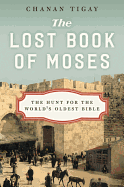
| Publisher: | Ecco | |
| Genre: | Expeditions & Discoveries, Biography & Autobiography, History, Religion, Adventurers & Explorers, Antiquities & Archaeology | |
| ISBN: | 9780062206411 | |
| Pub Date: | April 2016 | |
| Price: | $27.99 |
| Starred | Religion |
by Chanan Tigay
In 1883, a Jerusalem antiquities merchant named Moses Wilhelm Shapira offered to sell the British Museum what he claimed was an ancient copy of Deuteronomy for the breathtaking sum of £1 million (about £110 million, or $160 million, today). After initial popular and scholarly excitement, the scrolls were dismissed as frauds. Shapira committed suicide soon after, and his scrolls disappeared.
Israeli journalist Chanan Tigay first heard the story of Shapira's scrolls in 2010. The tale caught his imagination, especially when he learned that Shapira's manuscripts were strikingly similar in form and reputed provenance to the Dead Sea Scrolls, the discovery of which six decades later had fundamentally changed Biblical scholarship. A small group of scholars had come to believe that Shapira's scrolls might have been authentic. But without the scrolls themselves, no one could know.
The Lost Book of Moses: The Hunt for the World's Oldest Bible tells the story of Tigay's attempt to locate Shapira's missing scrolls, a four-continent, 15-year trail of red herrings, unexpected leads and repeated dead ends that led him to academic archives, antiquarian booksellers, museum storerooms, a hotel attic and a surprising number of Anglican church services. Tigay places his search against the background of not only Shapira's life, but also the broader context of the economic revival of Ottoman Jerusalem in the 19th century, venomous rivalries in the developing fields of Middle Eastern archeology and biblical textual criticism, and the art of faking antiquities.
The Lost Book of Moses is half treasure hunt, half research project, and wholly engaging. --Pamela Toler, blogging at History in the Margins
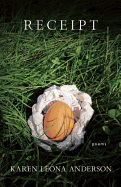
| Publisher: | Milkweed Editions | |
| Genre: | Women Authors, Poetry | |
| ISBN: | 9781571314727 | |
| Pub Date: | April 2016 | |
| Price: | $16 |
| Starred | Poetry |
by Karen Leona Anderson
Like Prufrock's coffee spoons, an existence can be measured by its detritus, or so attests Iowa Writers' Workshop graduate Karen Leona Anderson, whose Receipt: Poems mines recipes and receipts for their larger context. Under Anderson's pen, these scraps metamorphose into records of a life lived, from doubts to squabbles to celebrations, measuring cups of sugar and teaspoons of vanilla much like the passage of time.
Receipt's range allows readers to feel as if they're shadowing Anderson's every footstep, from the drugstore to the kitchen, the dressing room to the online shopping cart. In "SKIRT ($26.96 T.J. Maxx)," a constricting piece of cloth becomes a metaphor for the pressures of womanhood. She writes, "I can't/ pin up a whole half/ of the species. I can't stop./ I guess a good skirt/ would help... I guess the force with which/ I pleat myself back to myself." These glimpses at the psyche pepper every poem like a condiment, the ingredient that gives them their heft. Where lesser poets might stop at the gimmick, Anderson unravels each garment until we're left with the barest, most essential questions: What does it mean to be a human (woman) in this world?
Receipt doesn't contain a definitive answer, but its vital, probing questions get the reader one step closer. It's a celebration of the banal: the scraps we often throw away, the mall stores of our youth, TV dinners and vintage Betty Crocker, the artifacts that form a life entire. --Linnie Greene, freelance writer
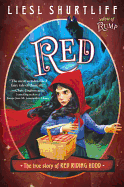
| Publisher: | Knopf | |
| Genre: | Animals, Fairy Tales & Folklore, Adaptations, Fantasy & Magic, Action & Adventure, Juvenile Fiction, Wolves & Coyotes | |
| ISBN: | 9780385755832 | |
| Pub Date: | April 2016 | |
| Price: | $16.99 |
| Starred | Children's & Young Adult |
by Liesl Shurtliff
In Red: The True Story of Red Riding Hood, Liesl Shurtliff returns to the fairy-tale world she first explored in the award-winning Rump: The True Story of Rumpelstiltskin. Now Rump's pal, the strong-minded 12-year-old Red, is on her own quest. Yes, there's a wolf, a huntsman and a granny who needs saving, but the charm of Shurtliff's retelling is how she imbues the storybook tropes with vibrant humanity.
Red's granny, a powerful witch, taught her magic early on, but after growing roses from her nose and other disastrous mistakes, Red has sworn off spell-casting as "unpredictable, finicky, and dangerous." When Granny falls ill, Red gathers her courage and decides to give magic one last try, setting off into the perilous woods to fetch the ingredients for a potion to cure her. Saddled early on with the annoyingly cheerful Goldie (who, not surprisingly, loves porridge), Red can barely contain her exasperation: "Every word she spoke, every little movement she made, was like an itchy bite, and her curls made me dizzy." But the two forge a friendship that carries them through adventures with pixies, dwarves, a mysterious enchantress and more than one intriguing beast. Shurtliff offers up delights like an enchanted path that opens for Red alone as she travels through the woods, and a certain ruby-hued cloak that turns out to be more than just a fashion accessory. The ending is moving and filled with hope, as Red learns that only fear can make magic go awry. --Ann Shaffer, freelance writer and editor
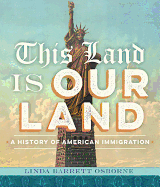
| Publisher: | Abrams | |
| Genre: | ||
| ISBN: | 9781419716607 | |
| Pub Date: | April 2016 | |
| Price: | $24.95 |
| Children's & Young Adult |
by Linda Barrett Osborne
The United States is a melting pot, and immigration is a hot topic.
All eight of author Linda Barrett Osborne's grandparents were born in Italy, and all of them came through New York's Ellis Island in the late 1800s. As Osborne points out, "The ancestors of everyone who lives here, except for the Native Americans 'discovered' in North America by Europeans in the early sixteenth century, came from somewhere else." The Statue of Liberty, a symbol of hope around the world, welcomes "Your huddled masses yearning to breathe free." And sometimes not. This Land Is Your Land shows, for better or for worse, just how similar immigration policy has sounded since the time of Benjamin Franklin--a perpetual wavering between openness and restriction.
Osborne (Traveling the Freedom Road; Miles to Go for Freedom) tells the story of American immigration with dozens of personal anecdotes that make the statistics live and breathe, giving essential, often eye-opening context to today's debates. Abundant high-quality historical photographs and illustrations--and a time line of immigration history--further invigorate the author's engaging, pithy text that covers "Germans, Irish and Nativists"; "Italians, Jews, and Eastern Europeans"; "Immigrants from Asia"; "Latin American Immigrants"; "Refugees"; and immigration from "World War II into the Twenty-First Century." The handsome two-column design, illustrated with so many wonderful faces of newcomers from around the world, goes a long way to help clarify and enliven this tragic and triumphant, ever-evolving global story. --Karin Snelson, children's & YA editor, Shelf Awareness
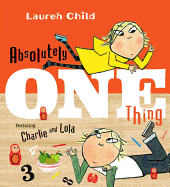
| Publisher: | Candlewick | |
| Genre: | Concepts, Family, Juvenile Fiction, Siblings, Counting & Numbers, Social Themes, Emotions & Feelings | |
| ISBN: | 9780763687281 | |
| Pub Date: | April 2016 | |
| Price: | $17.99 |
| Children's & Young Adult |
by Lauren Child
Math is not a scary, abstracted monolith, it's folded into everyday life in countless ways. Leave it to British author-illustrator Lauren Child's (I Will Never Not Ever Eat a Tomato) ever-charming Charlie and his little sister Lola to make this point with panache.
Absolutely One Thing refers to how many treats Charlie and Lola get to choose when they go to the store with Mom: "One thing EACH," says Charlie, "which means TWO actual things." The delightfully mish-mashed spread--in Child's trademark scratchy line drawings with hodge-podge collage elements--shows Lola on her stomach on the floor, a supernaturally giant green apple in the middle, and Charlie holding one apple in each hand. "ONE for me, ONE for you," and a big "2÷2=1" looms above them, for good measure. Mom says they have to be ready to leave in 10 minutes, which, for Charlie, is the sum total of three minutes of tooth-brushing, one minute of remembering he forgot to eat breakfast, four minutes to eat "puffa pops," three minutes to brush his teeth again, and "EIGHT minutes to find Lola's left shoe." (That makes them 19 minus 10 minutes late.) Then, Lola needs to count the dots on her dress, but isn't sure what comes after 12. (She has no trouble, however, counting "twenty-seventeen" ladybugs on the way to the store, though she does puzzle over how many shoes the leggy bugs would wear.)
What really matters is that once they get to the store Lola pronounces, "Two things" and Mom says "Absolutely ONE thing," which is math that never ever changes. --Karin Snelson, children's & YA editor, Shelf Awareness